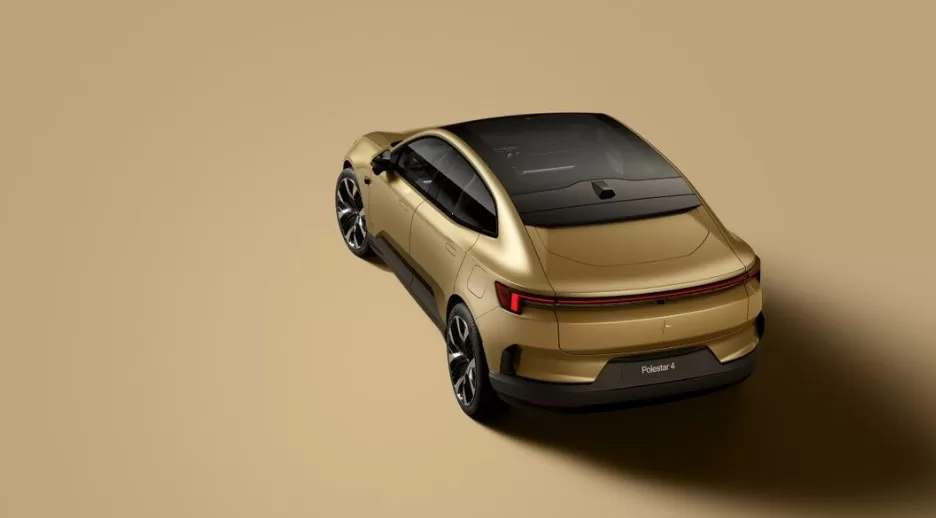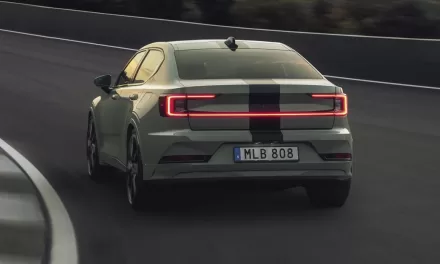Electric car startup Polestar debuted its fourth product this week — a vehicle that defies categorization so thoroughly that the automotive press can’t agree on what to call it. A little more than half of the outlets covering the premiere of the 2025 Polestar 4 call it an SUV. A little less than half call it a sedan. Polestar, despite its four doors, calls it a coupe.
The only thing everyone can agree on about the Polestar 4 is the weird thing: It has no rear window.
Yes, you read that right.
What Is Polestar?
Polestar, if you haven’t seen one in your neighborhood yet, builds electric vehicles (EVs). The company was once an in-house tuner shop building high-performance versions of Volvo vehicles. It has since spun off into its own publicly traded company. Its first car, the sporty Polestar 1, was built in small numbers and sold out in 2021. Its best-known product is the Polestar 2, a high-riding all-electric sedan with a rugged look and a Scandinavian minimalist cabin. Our expert reviewers like the 2, finding it more subtle than a Tesla with similar virtues and a distinct lack of controversial high-profile billionaire CEOs.
Its third product is a low-slung SUV called the Polestar 3, notable for its sporty look and some advanced safety systems it shares with the upcoming Volvo EX90.
Its fourth is the weird one.
Polestar didn’t give prices but said “indicative launch pricing” starts “from $60,000.” We love it when the people who sell something have vague indications of what it might theoretically cost.
The “SUV Coupe” Taken to Extremes
Polestar says the 4 “transforms the aerodynamics of a coupé and the space of an SUV into a new breed of SUV coupé.”
Many automakers — particularly European luxury brands — have taken to designing so-called SUV coupes. They have four doors and ride high like SUVs but have the low-slung, aerodynamic lines of sportier coupes. Think BMW X4 and Audi Q5 Sportback.
The Polestar 4, however, takes the trend to a new extreme.
Its front looks like what you’d get if you asked AI art generator software Midjourney to draw you a cyberpunk catfish. A split set of narrow LED headlights frame a thin-slit false grille. Aggressively curved doors with a crisp line near the doorsill add to the sleek arrow effect.
But all anyone will want to talk about is the rear view, or rather, the lack of one. The Polestar 4 has a huge panoramic glass roof arcing down toward the rear but a panel of body-color painted metal where you’d expect the rear window to be. The sleek arcing roof is what triggers the sedan/SUV debate. The 4 looks sporty and probably offers more rear-seat headspace than a sedan. But it’s hard to call it an SUV with such a low roof.
The roof is available with “optional electrochromic functionality, allowing for opaque or transparent execution depending on the mood.”
Maximilian Missoni, Head of Design at Polestar, says the car provides “a stunning new occupant experience by removing the rear window and pushing the rear header, which plays an integral safety role, further back. This means that now, rear occupants can have a unique experience in our SUV coupé.”
The lack of a rear window is certainly unique.
We can’t shake the memory, however, of Apple taking a public relations beating when designer Phil Schiller said the company removed the headphone jack from its phones out of “courage.”
A Rearview Camera in Place of a Rearview Mirror
The driver isn’t blind to what’s behind them. Instead, the traditional rearview mirror is replaced by a screen. It shows the view from a camera placed on the rear of the car. Incredibly, Polestar sells this as a safety feature. The camera enables “a far wider field of view than what can be experienced in most modern cars,” the company says. Should you turn it off, it turns into a conventional mirror so you can check on rear seat passengers.
The SUV/sedan debate isn’t helped by low ground clearance and a two-tone paint scheme that uses black low on the doors to make it look like a higher-riding vehicle.
Minimalist Cabin
Inside, the Polestar 4 sticks with the brand’s beloved minimalism. A 15.4-inch landscape-mounted touchscreen dominates a simple, low dashboard with no other visible controls. The driver gets both a 10.2-inch instrument display and a 14.7-inch head-up display to try to keep them from looking at the giant screen.
In a very Swedish move, the head-up display can change its lettering from white to yellow in case snow on the roads makes it hard to see the white.
Yellow also makes an appearance in the brand’s now-signature golden seatbelts.
272 to 544 Horsepower
Base models get a single electric motor powering the rear wheels, good for 272 horsepower. A step up to all-wheel drive gets you two motors, one per axle, and 544 horses. Polestar says that version can leap from 0-60 mph in 3.8 seconds, making the 4 the quickest Polestar to date.
Only one battery pack is available. Polestar calls it the long-range version, which is easy to do when there are no competing versions. It has a capacity of 102-kilowatt hours — on the large size among current EVs. The company claims a target range of over 300 miles but gives its figures on the European test cycle. Testing by the American EPA tends to result in lower-range figures.
Polestar says the 4 will launch in “early 2024.”
Read More Kelley Blue Book





